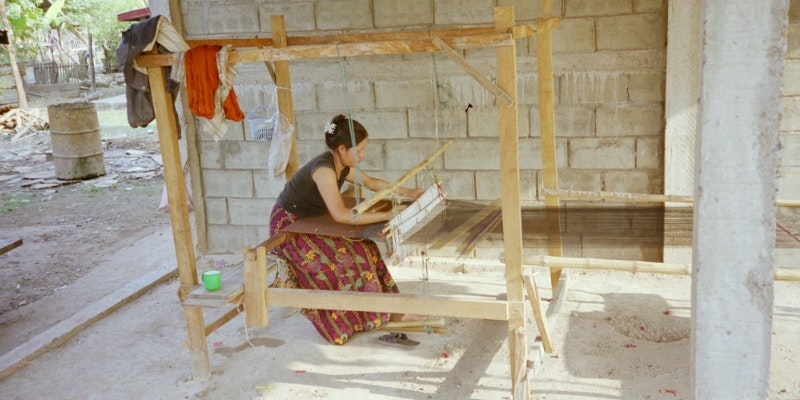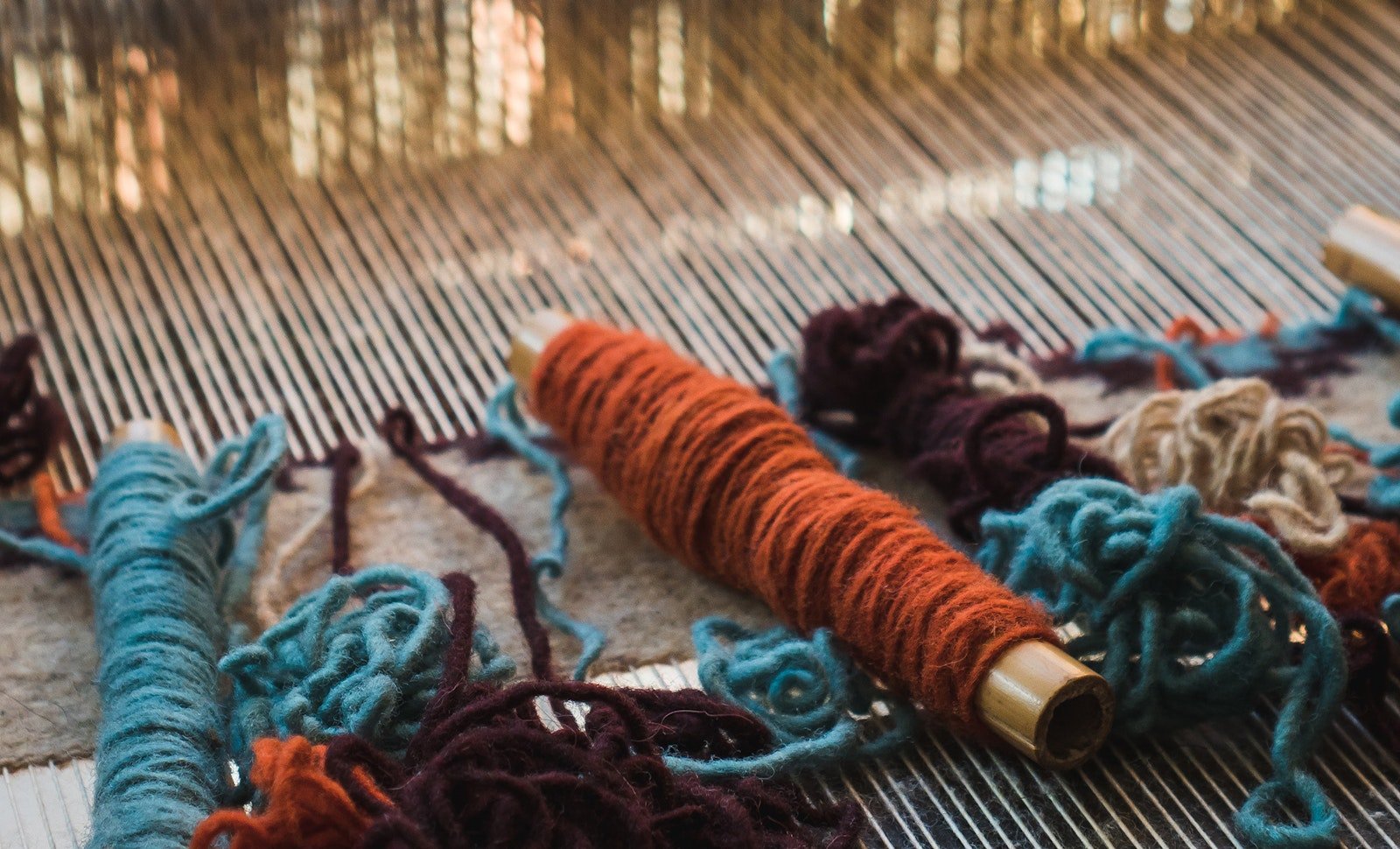In her Traditions article for the May/June 2017 issue, Elisabeth Hill muses on the metaphor of the unbroken thread and how, through our art and our craft, we are all connected as weavers around the world and throughout time. Here’s an excerpt from her article, to see the full article check out the May/June 2017 issue of Handwoven. —Christina
Weaving metaphors abound, but one that resonates with me is “the unbroken thread.” For me, it describes my connection to weavers who have gone before. After thousands of years of wefts crossing warps across cultures and continents, it is hard to imagine that there are any undiscovered interlacements or techniques. But every era, culture, and weaver brings their own knowledge, sense of color, materials, and designs to weaving, thereby creating a very deep and rich repository for modern weavers to draw from.

A weaver works at her loom in Laos. Photo by OlausPetri
Textiles depicted in drawings, photographs, and books are awe inspiring, but holding and touching a piece of handwoven fabric that was woven by a long-departed weaver is almost magical. I imagine them sitting at the loom, building their fabric pick by pick, manipulating the threads. What were they thinking as the cloth built? Were they weaving fabric for their home, clothes for their family, or a ceremonial piece that would mark a life passage? Or as we wonder with this beautiful linen sampler, were they weaving a study, learning their craft through the piece? Did they keep it as a record for their own study, or to leave guild members with a tidbit of their knowledge, clearly marked with notes?
As far as I know, none of my foremothers were weavers, but I inherited quite a few quilts from my grandmother and great-grandmother, and even as a child, I remember looking at the tiny handstitching that connected the hexagons of my great-grandmother’s quilt and being transported into the past, imagining a woman I never knew sewing those tiny, perfect stitches. The fabrics were soft and faded and had patterns that evoked a bygone era of ladies in hats and gloves.
My grandmother’s quilts were made from fabric scraps left over from sewing clothes (dresses, short sets, and pajamas that she made for my sister and me with matching dresses for our Barbies). I remember lying under those quilts with my sister and reminiscing fondly about the clothes long outgrown, worn out, or passed on. Those quilts held memories; they were literally scrapbooks for us.
Handwoven samples, woven by weavers and passed down in the form of notebooks, archived textiles, and samplers, provide modern weavers with an amazing record. They are not simply a personal record of one weaver’s interests, color preferences, and skill, but a tactile history (mostly her-story) of weaving trends, new and exciting fibers, and areas of interest that explode and recede.
—Elisabeth Hill

